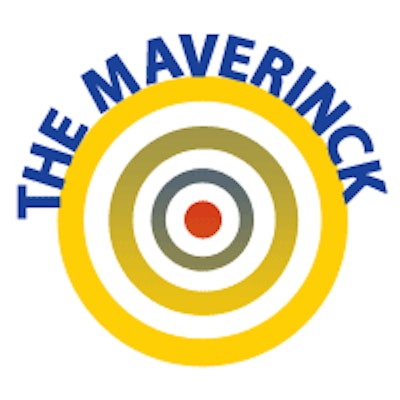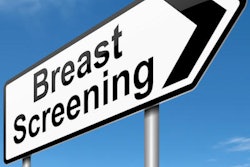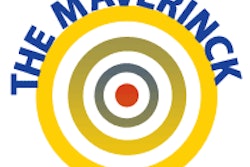
After two recent reports -- one Canadian1 and one Swiss2 -- screening mammography is in the news again. In fact, it's all over the media. The latter study clearly recommends the abolition of screening mammography in Switzerland.
The conclusion of the Canadian study, published in BMJ, is as follows: "Annual mammography in women aged 40-59 does not reduce mortality from breast cancer beyond that of physical examination or usual care when adjuvant therapy for breast cancer is freely available. Overall, 22% (106/484) of screen-detected invasive breast cancers were overdiagnosed, representing one overdiagnosed breast cancer for every 424 women who received mammography screening in the trial."
 Dr. Peter Rinck, PhD, is a professor of diagnostic imaging and the president of the Council of the Round Table Foundation (TRTF) and European Magnetic Resonance Forum (EMRF).
Dr. Peter Rinck, PhD, is a professor of diagnostic imaging and the president of the Council of the Round Table Foundation (TRTF) and European Magnetic Resonance Forum (EMRF).
But remember the saying, "Thou shall not write anything negative about mammography screening." Shortly after the publication of this report, the "pope of screening mammography," Dr. László Tabár, thundered his response on AuntMinnieEurope.com:
"The publication by Dr. Anthony Miller and colleagues in BMJ used substandard and outdated mammography technique to claim that mammography screening would add nothing beyond what physical examination can accomplish."
Of course, Tabár sets the standard and decides what is relevant and what not -- ivory tower versus reality in medicine. Personally, I never liked x-ray mammography because it reminded me of searching for the truth on the bottom of a tea cup: You either see something in the leaves or you don't. You need permanent practice, tens of thousands of studies, and many years of experience until you reach a point where your judgment becomes adequate. Still, the technique is elusive.
The reality is different, and sometimes in life reality passes one on the fast lane. It's not the pope and his cardinals who are reading these studies; it's the busy bees in the departments and private offices. Their work might be "substandard," but it's these results one has to look at and compare.
Let's look at the benefits and harms of breast cancer screening, as summarized in 2012 by the Independent U.K. Panel on Breast Cancer Screening for the U.K.: "For every 10,000 women aged 50 years invited to screening for the next 20 years, 43 deaths from breast cancer would be prevented and 129 cases of breast cancer, invasive and noninvasive, would be overdiagnosed; that is one breast cancer death prevented for about every three overdiagnosed cases identified and treated."
In a letter to the editor, Peter C. Gøtzsche and Karsten Juhl Jørgensen from the Nordic Cochrane Center in Copenhagen add their results:5
The estimate of overdiagnosis in the Cochrane review was 29%, and observational studies have found 33% overdiagnosis in Denmark (which has an ideal control group because 80% of the country was not screened for 17 years), and 52% in a systematic review of countries with organized screening programs.
Is it acceptable that a public health initiative each year converts thousands of healthy women into cancer patients unnecessarily, which is fatal for some of them?
I checked: Every six years I have written a column about screening mammography.6,7 I still insist: Primum non nocere -- first, do not harm. Tacitly or even explicitly accepting heavy collateral damage in medicine is bad medicine. If the damage is as high, or even higher than the success, one cannot recommend a procedure. Or is there an "acceptable loss" of more or less healthy persons, as it is in warfare?
Always keep in mind: These arguments are against screening mammography -- not against mammography as such where it is due and indicated. This, however, should be decided by the referring physician on a one-by-one basis, and the patient should be informed about the risks of mammography.
Dr. Peter Rinck, PhD, is a professor of diagnostic imaging and the president of the Council of the Round Table Foundation (TRTF) and European Magnetic Resonance Forum (EMRF).
References
- Miller AB, Wall C, Baines CJ, Sun P, To T, Narod SA. Twenty-five-year follow-up for breast cancer incidence and mortality of the Canadian National Breast Screening Study: Randomised screening trial. BMJ. 2014;348:g366. http://www.bmj.com/content/348/bmj.g366.
- Biller-Andorno N, Jüni P. Abolishing mammography screening programs? A view from the Swiss Medical Board [published online ahead of print April 16, 2014]. NEJM. 2014. http://www.nejm.org/doi/full/10.1056/NEJMp1401875.
- Tabár L, Chen TH. We do not want to go back to the Dark Ages of breast screening. AuntMinnieEurope.com. 12 February 2014.
- Independent U.K. Panel on Breast Cancer Screening. The benefits and harms of breast cancer screening: An independent review. Lancet. 2012;380(9855):1778-1786.
- Gøtzsche PC, Nielsen M. Screening for breast cancer with mammography. Cochrane Database Syst Rev. 2009; 4. CD001877; and Gøtzsche PC, Juhl Jørgensen K. The benefits and harms of breast cancer screening. Letter to the editor. Lancet. 2013;381(9869):799.
- Rinck PA. Rinckside. Screening programs must show clear benefits. Diagnostic Imaging Europe. 2002;18(5):12-14.
- Rinck PA. Rinckside. If it moves, radiologists will want to screen it. Diagnostic Imaging Europe. 2008;24(5):12-13, 39.
The comments and observations expressed herein do not necessarily reflect the opinions of AuntMinnieEurope.com, nor should they be construed as an endorsement or admonishment of any particular vendor, analyst, industry consultant, or consulting group.



















